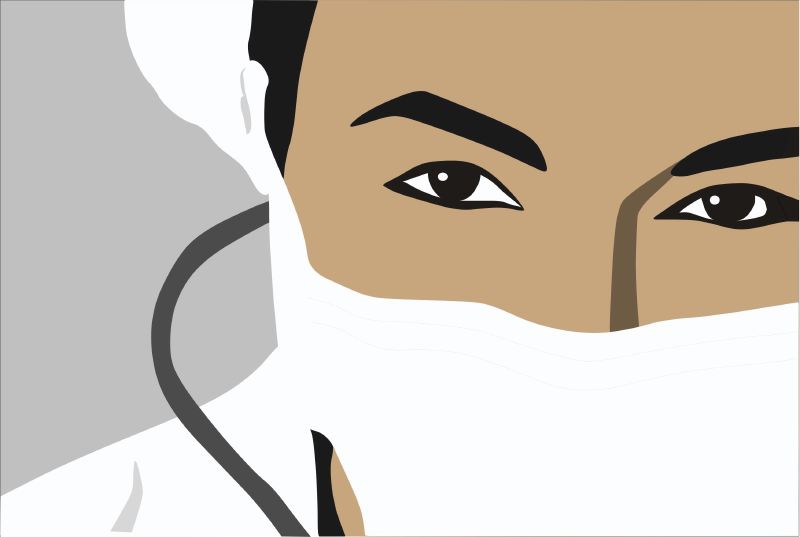
In Part 1, we examined why doctors die at their own hands in such horrifying numbers — approximately one per day — and how physicians end up with higher mental illness, substance abuse, and suicide rates than other groups. In this Part 2, we explore these barriers in physicians and we seek to debunk and start overcoming these barriers to help. In so doing we hope to contribute to physician suicide prevention, improve understanding of the-seeking contributors to the epidemic of physician suicide, and address this global tragedy.
Without overcoming or reducing these barriers to care, burnout will increase, and along with it medical errors; and catastrophically, the physician suicide rate will continue to climb.
Worryingly, despite our higher rates of mental illness and suicidal ideation, and our access to resources, we are also less likely to seek the help we need. Clearly, this reluctance is not good for physician suicide prevention.
For example, the 2021 Medscape Physician Survey found that 13% of us reported suicidal thoughts. Of those, only a third sought help.
The main barriers, as we have discussed previously, are:
Moreover, as Dike Drummond MD says, there are 2 further barriers: the unbending principles drummed into every doctor during years of med school, residency, and hospital work:
Here, we debunk or reframe each of these barriers.
Below we list what can be done, based on pur experience in the physician mental health space, coaching colleagues through burnout, and the evidence on physician suicide prevention:
This dictum is in our DNA as doctors. Even if it wasn’t genetic, it becomes environmentally hard-wired during our medical training.
And it is right up to a point: we are here in the service of our patients. But only as long as we are fit to provide that service.
This is a key reason why physicians are continually the most trusted profession (and politicians are the least trusted – who knew!). Our patients know that they can rely on us. That we will give them the best care we can. That their secrets will remain confidential with us.
Yet, when we are burned out, mentally ill, or addicted, we cannot possibly put our patients first. There were times when I was seeing patients when I should not have because I was so depressed that I couldn’t think straight, but I carried on because the patient came first.
Thank God, to my knowledge, no patients were harmed while I was ill, but I guess I can never know that for sure.
We cannot pour from an empty cup. We need to put our oxygen mask on before we can help others. Choose any other metaphor you like: without our own health, we cannot impart health to others.
So, I’m going to brazenly rephrase the wording into, “Patients come first only when their physicians are healthy”.
Another “rule” of medical training, this speaks of our macho medical culture, our elevated position on pedestals as the lead clinician, the diagnoser, the prescriber, and the final arbiter of life or death/to operate or not/to certify(section) the psychotic patient/to ventilate or not.
To hesitate at these moments or to question ourselves is often seen as weakness.
Somehow by showing weakness, the thinking is that our position will be undermined, people will stop believing in us, and the whole medical system will fall apart.
This is false thinking.
While decisive leadership is important, so is considered and thoughtful leadership. Leaders who show their humanity and vulnerability are more respected than cast iron robots.
It’s a relief to hear someone admit they’re not perfect. People understand because chances are they’ve been to some difficult places, too. You can’t be comfortable in your skin until you know who you are, and you’re willing to open up and admit who you are.
Asking people to include their faults into the mix is a tough sell.
However, to really tackle physician suicide prevention, we desperately need to recognize our humanity and hence our vulnerability and imperfections.
Somehow by showing weakness, the thinking is that our position will be undermined, people will stop believing in us, and the whole medical system will fall apart. This is false thinking.
This is, sadly even in 2022, a reality-based fear because the world still stigmatizes mental illness, despite the lack of evidence that these invasive questions don’t protect patients. Many medical regulators still penalize physicians for reporting mental health concerns or treatment. In the year 2022, while a few states have shifted, the majority still ask these questions.
Perhaps the most well-known physician colleague who ended their own life tragically is Dr Lorna Breen. Her story is hard to read, and, personally, it makes me so angry that the system failed her in so many ways.
The Lorna Breen Heroes Foundation has developed a Licensing and Credentialing Toolkit to address the discrimination that occurs around disclosure of mental health conditions and treatment – to employers, state licensing boards, during malpractice background checks, etc.
To remove all fear of professional consequences, every medical regulator and employer needs to simply remove all questions relating to a physician’s mental health and treatment.
A number of forward-looking US states and physician-friendly countries and hospitals have eliminated the questions about mental health from their forms, but there is a lot more to be done.
[Also see “You still need to reach out” below.]
“Given the trauma and the burnout they have experienced, this is like sending the entire workforce off to war for 18 months and then refusing to support them when they return” – J. Corey Feist, Brother-in-law of Dr Lorna Breen.
Even if the medical regulators and employers develop a conscience and stop asking mental illness questions, there is another issue: stigma. Mental illness stigma is both internal and external.
Despite all the evidence that mental illness and substance abuse are neurobiologically based, many physicians hold stigmatizing views about “psych patients”. This is particularly problematic if the physician themselves might become a “psych patient”. They have to deal with their own shame and a lack of compassion and understanding from their colleagues, employers, and insurers.
Until we treat mental conditions equally with physical ones, this stigma will remain a barrier to suffering physicians getting help.
While progress has been made globally in reducing stigma, if we are to reduce physician suicide prevention, physicians — even psychiatrists! — need to address their internalized mental health stigma.
We hope to produce a blog on this in due course.
While no-one denies the insane hours that most physicians work, it is a matter of priorities. Taking time or making time for professional support is not a luxury, it is essential. Employers could actually empower physicians by building self-care and mental health support time into rosters and workload planning. Until that magical time comes, however, please just take or make the time to get the support you need. It will pay off 1000x once you are well again.
Sometimes physicians are our own worst enemies. We learn self-reliance, stoicism, and independence from early on. Multiple studies report that doctors don’t seek help because they think they can manage on their own.
If we break a leg, there is no way we would avoid seeing an orthopedic surgeon and try and fix it ourselves. Why do so many of us refuse to get help from the right professionals?
No matter how fearful we may be of career consequences, we cannot expect to make ourselves get better by willpower, working harder, or working smarter. If we are mentally ill or addicted or burned out, we need to get help. We owe it to ourselves, our loved ones, and our patients.
As we’ve discussed above, we cannot pour from an empty cup.
In this article, we have tackled the commonest reasons for physicians not getting help.
Reducing barriers to care and normalizing looking after our own mental health are essential solutions to physician suicide prevention.
In Part 3, we look at the systemic causes of physician suicide and explore what can be done about them.
